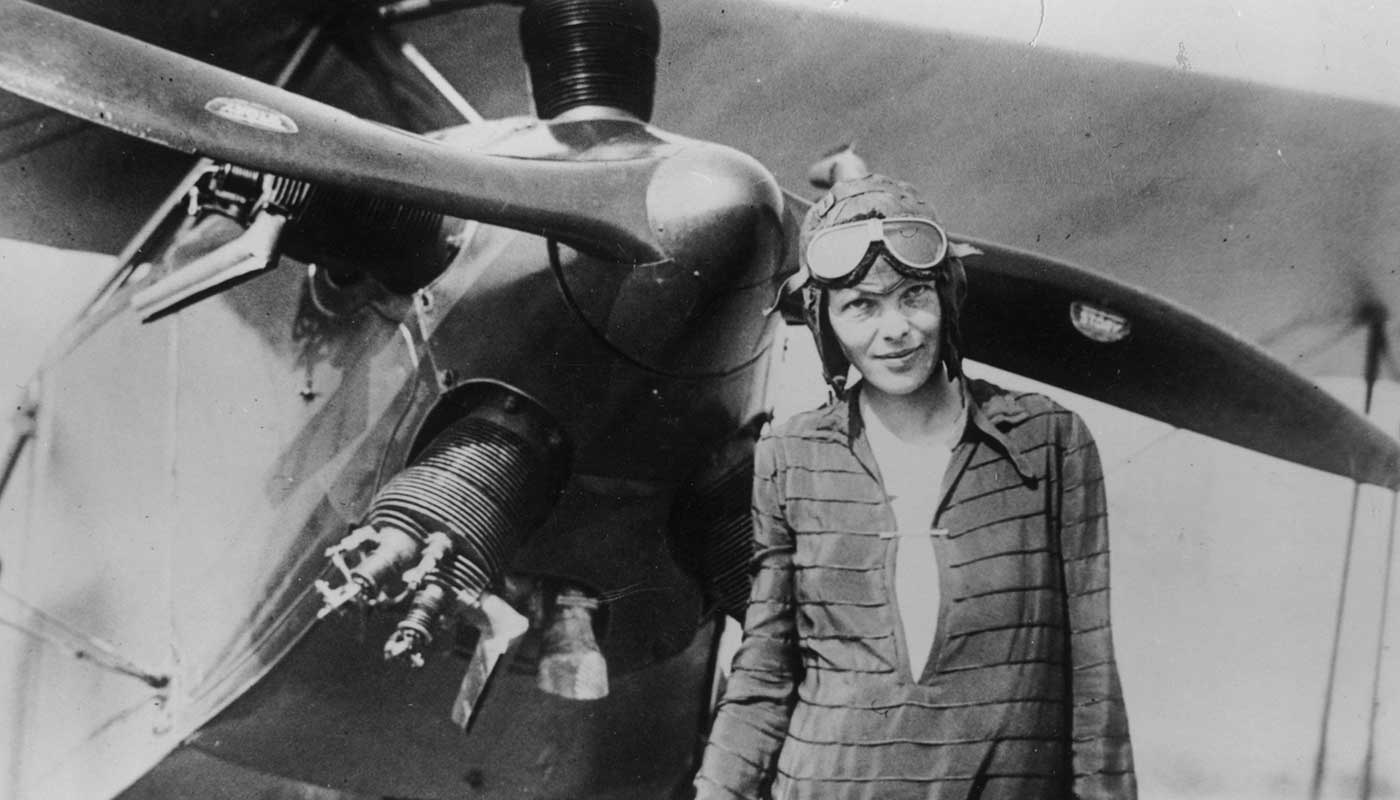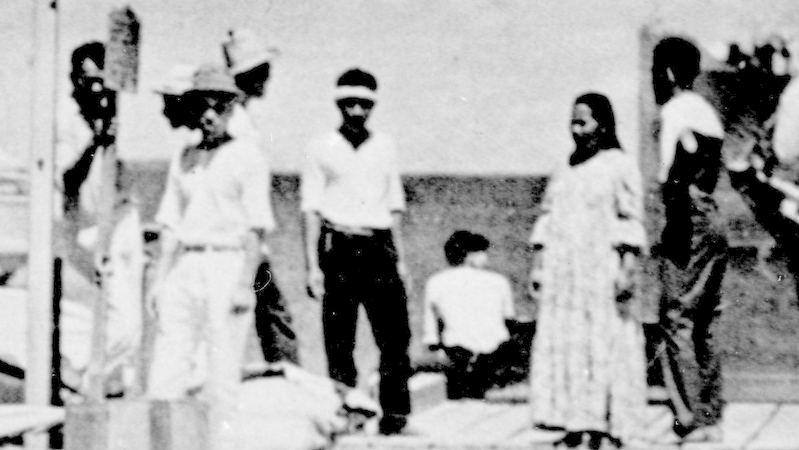Amelia Earhart mystery ‘solved’ by old bones
New study says bones found in 1940 are a ‘99% match’ to the missing aviator

Human bones found on Nikumaroro, a remote Pacific island, in 1940 are likely to be the remains of aviator Amelia Earhart, according to new forensic analysis.
Earhart, who was the first woman to fly solo across the Atlantic Ocean, disappeared in 1937 while trying to fly around the world.
A new study published in Forensic Anthropology by University of Tennessee Anthropology Professor Richard Jantz claims that the bones found on Nikumaroro, part of Kiribati, 1,800 miles south-west of Hawaii, are a “99% match” with the shape and size of Earhart’s skeleton.
The Week
Escape your echo chamber. Get the facts behind the news, plus analysis from multiple perspectives.

Sign up for The Week's Free Newsletters
From our morning news briefing to a weekly Good News Newsletter, get the best of The Week delivered directly to your inbox.
From our morning news briefing to a weekly Good News Newsletter, get the best of The Week delivered directly to your inbox.
The ABC reports that Jantz “used an inseam length and waist circumference from a pair of Earhart's trousers” to make his assessment, comparing them with measurements of the skeleton found on the island.
“In the case of the Nikumaroro bones, the only documented person to whom they may belong is Amelia Earhart,” Jantz wrote in the study.
A 1941 report “concluded that the bones belonged to a male”, says CNN, and “the bones themselves have since been lost”, preventing DNA or other analysis.
When they were found, the bones were believed to have been male. They have since been lost
A free daily email with the biggest news stories of the day – and the best features from TheWeek.com
The BBC says Earhart was “known to have been near the island when she vanished”.


7 July 2017
Does this photo show Amelia Earhart survived her crash?
A photograph has surfaced online that some believe shows that pioneer aviator Amelia Earhart may have survived her mysterious crash, only to be arrested by the Japanese.
In 1937, Earhart vanished over the Pacific Ocean during an attempt to circumnavigate the globe, along with her navigator Fred Noonan. For 80 years, the fate of the two has remained a mystery, and both were pronounced dead after an investigation by the US government.
The newly-discovered photo, which was found in America's National Archives, shows a group of people standing on a dock in the Marshall Islands, which were then under Japanese control. It is believed to have been taken by a US spy, the BBC reports.
NPR says a former US treasury agent found the photo, which was undated, in a box marked "declassified".
One member of the group is sat on the ground with her back to the camera, and speculation has arisen that this may be Earhart. A man stood on the far left in the photo is rumoured to be Noonan. "The hairline is the most distinctive characteristic," Ken Gibson, a facial recognition expert who studied the photo, told The Independent. "It's a very sharp receding hairline. The nose is very prominent."
Others are less convinced.
"Let's use our heads for a moment," Ric Gillespie, author of Finding Amelia and executive director of The International Group for Historic Aircraft Recovery, told the BBC. "It's undated. They think it's from 1937. Okay. If it's from July 1 1937 then it can't be Amelia, because she hadn't taken off yet. If it's from 1935 or 1938 it can't be her. This photograph has to have been taken within a very narrow window - within a couple of days of when she disappeared.
"If this is a picture of Amelia Earhart in Japanese custody, where are the Japanese? There are no soldiers in this picture. Nobody in uniform."
-
 ‘Care fractures after birth’
‘Care fractures after birth’instant opinion Opinion, comment and editorials of the day
-
 Shots fired in the US-EU war over digital censorship
Shots fired in the US-EU war over digital censorshipIN THE SPOTLIGHT The Trump administration risks opening a dangerous new front in the battle of real-world consequences for online action
-
 What will the US economy look like in 2026?
What will the US economy look like in 2026?Today’s Big Question Wall Street is bullish, but uncertain
-
 How Bulgaria’s government fell amid mass protests
How Bulgaria’s government fell amid mass protestsThe Explainer The country’s prime minister resigned as part of the fallout
-
 Femicide: Italy’s newest crime
Femicide: Italy’s newest crimeThe Explainer Landmark law to criminalise murder of a woman as an ‘act of hatred’ or ‘subjugation’ but critics say Italy is still deeply patriarchal
-
 Brazil’s Bolsonaro behind bars after appeals run out
Brazil’s Bolsonaro behind bars after appeals run outSpeed Read He will serve 27 years in prison
-
 Americans traveling abroad face renewed criticism in the Trump era
Americans traveling abroad face renewed criticism in the Trump eraThe Explainer Some of Trump’s behavior has Americans being questioned
-
 Nigeria confused by Trump invasion threat
Nigeria confused by Trump invasion threatSpeed Read Trump has claimed the country is persecuting Christians
-
 Sanae Takaichi: Japan’s Iron Lady set to be the country’s first woman prime minister
Sanae Takaichi: Japan’s Iron Lady set to be the country’s first woman prime ministerIn the Spotlight Takaichi is a member of Japan’s conservative, nationalist Liberal Democratic Party
-
 Russia is ‘helping China’ prepare for an invasion of Taiwan
Russia is ‘helping China’ prepare for an invasion of TaiwanIn the Spotlight Russia is reportedly allowing China access to military training
-
 Interpol arrests hundreds in Africa-wide sextortion crackdown
Interpol arrests hundreds in Africa-wide sextortion crackdownIN THE SPOTLIGHT A series of stings disrupts major cybercrime operations as law enforcement estimates millions in losses from schemes designed to prey on lonely users